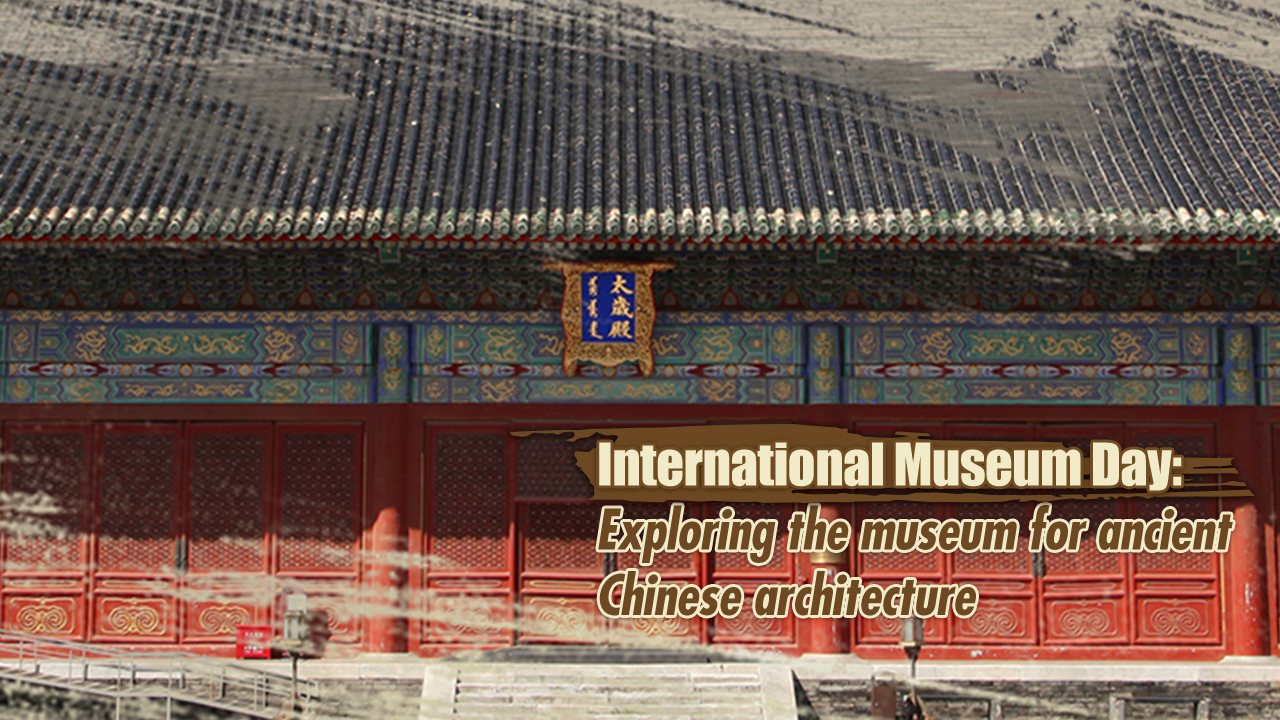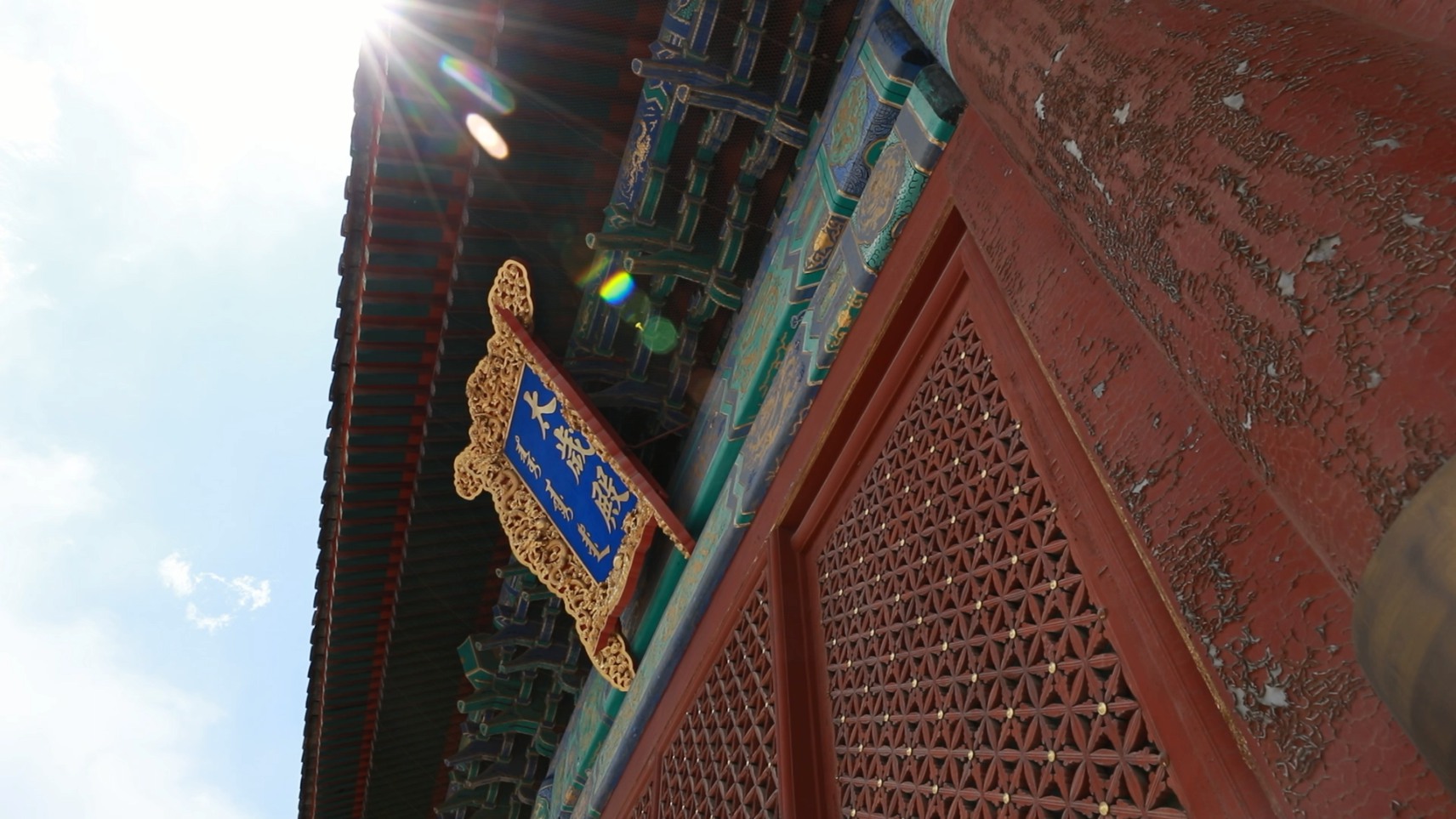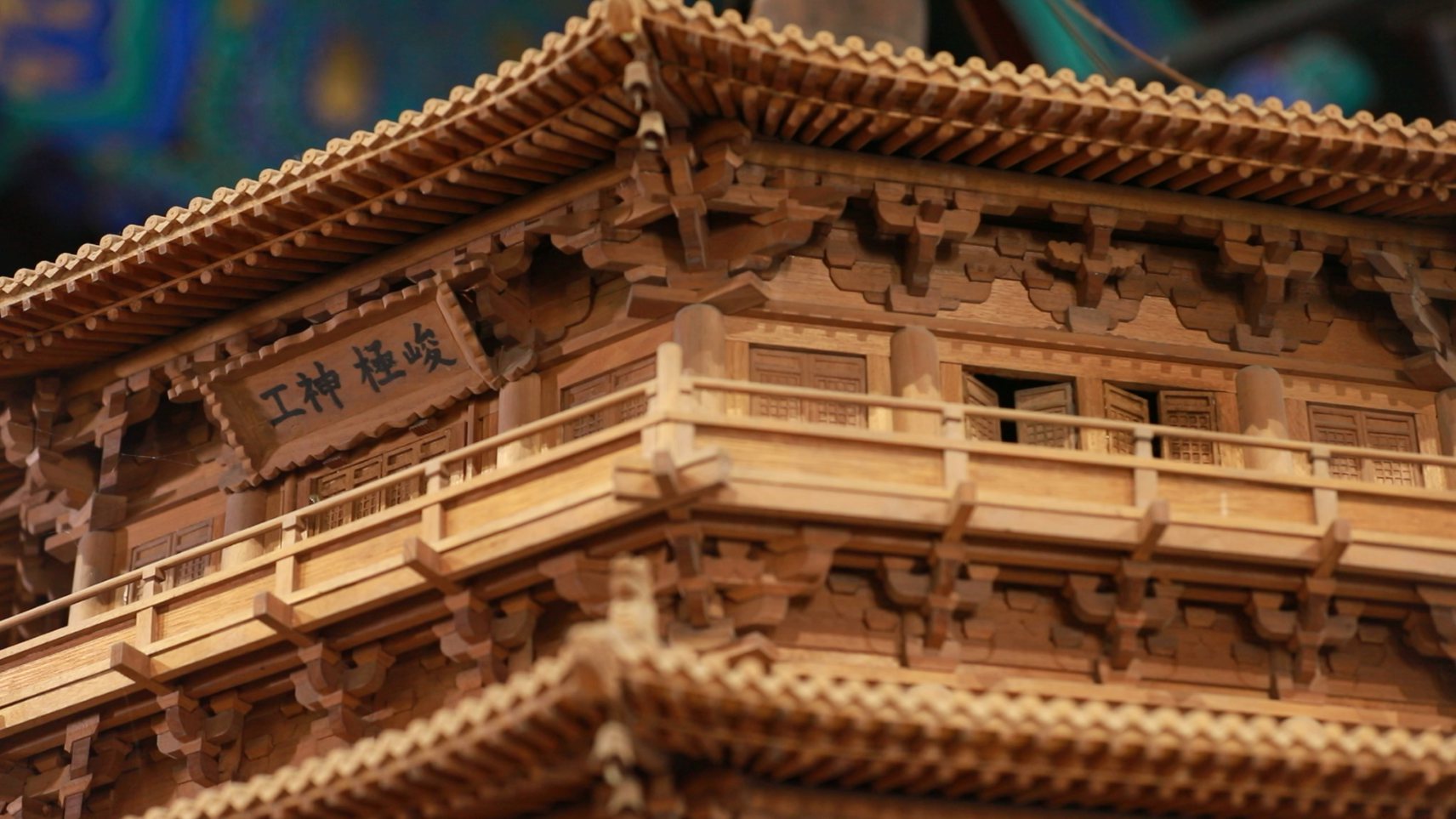03:20

China is marking the 45th International Museum Day with exhibitions and artistic events across the country on Tuesday. On International Museum Day, CGTN visited the Beijing Museum of Ancient Architecture, a museum with 30 years of history that specializes in ancient architectural skills and conservation. The team explored the relationship between this year's theme, "Recovering and Reimagining," and preserving ancient Chinese buildings with the museum's Deputy Director Zhang Min.
The Beijing Museum of Ancient Architecture is located in Beijing's Xiannongtan, or Temple of Agriculture, near the Temple of Heaven. It was the first specialized Chinese museum to concentrate on collecting, researching and displaying China's ancient architecture technologies, art and its development history.
Xiannongtan was built in the 15th century, and Ming and Qing dynasty emperors (1368 - 1911) used it to perform sacrifices. Its halls, pavilions, gates and walkways are architectural relics of extinct imperial traditions, connected both physically and historically to the Forbidden City and the Temple of Heaven. With its structure restored and its museum open to the public, Xiannongtan is once again an integral part of historic Beijing.

The outside of the Taisui Temple in Xiannongtan, Beijing. /CGTN
The outside of the Taisui Temple in Xiannongtan, Beijing. /CGTN
In a city "flooded" by modern architecture, the antique museum does not seem out of place, as people are intoxicated by the exquisite technology and retro beauty of ancient architecture.
According to Zhang, the museum has always been committed to showing the most authentic and intuitive ancient Chinese architecture to art and ancient architecture lovers and how the ancient treasures connect with modern society.
As the end of classical architectural culture is not likely to have been abrupt and modern and contemporary architecture was not born in a vacuum, Zhang believes there must be a link between them.
The museum displays many models of traditional Chinese wooden structures such as sunmao, or mortise and tenon, a wood skill that does not use nails and glue. The rich and colorful ancient Chinese buildings are mainly constructed with a timber frame structure, which is convenient for material procurement, restoration and removal. The wooden frame also has strong adaptability and facilitates a shorter construction time and anti-seismic ability.
The exquisite skill of sunmao has not been lost. Instead, it has been handed down, creating more exquisite building and wood products that stand out from modern techniques and structures.

The Beijing Museum of Ancient Architecture displays many models of traditional Chinese wooden structures such as sunmao, a wood technique that does not use nails and glue. /CGTN
The Beijing Museum of Ancient Architecture displays many models of traditional Chinese wooden structures such as sunmao, a wood technique that does not use nails and glue. /CGTN
Besides the beauty of the structure, ancient Chinese architecture also reflect an artistic conception of forms. Every component reflects the aesthetics and profound cultural connotations of the period.
"When we talk about the unique architectural skills or artistic means, we should first have a general understanding of China's ancient architectural culture and its most prominent artistic characteristics," Zhang said.
Restoration challenges
According to Zhang, most of China's ancient buildings are made of wood, making restoration and protection difficult.
"We should not do 'destructive protection,'" she said, adding that in the process of protecting cultural relics, it is very important to carry out scientific management and planning.

A miniature of the Central Axis of Beijing in Xiannongtan's Taisui Temple, Beijing, China. /CGTN
A miniature of the Central Axis of Beijing in Xiannongtan's Taisui Temple, Beijing, China. /CGTN
According to Zhang, the restoration of cultural relics and ancient buildings is not to make it a brand new and flawless thing but to protect it and retain its chronological characteristics.
"The recovery and inheritance we just mentioned are not just about the protection of an ancient house, nor about new and old or right and wrong. In fact, we need to use the ancient wisdom in the development of architectural culture, coupled with our intelligence today, to transform and recreate it," Zhang said.
Only by cherishing cultural relics and protecting ancient buildings can people have more opportunities to dig out the historical stories embedded within these cultural relics and make them a source of inspiration and wisdom for contemporary society.
Affected by the COVID-19 pandemic, the global museum industry is looking for a new way out. For these long-existing ancient buildings, their restoration and protection need funds, management and, more importantly, the help of new media methods.
According to Zhang, the Beijing Museum of Ancient Architecture has been gradually resuming activities, such as online archives, online tour guides and live broadcasting, in recent years to allow more people to access ancient architecture and this exquisite Chinese art.
"And that's in line with the theme of this year's International Museum Day in another way – Recovering and Reimagining," Zhang said.
Script: Ye Qing
Videographer: Zhang Chao
Video editor: Ye Qing, Wu Chutian
Cover image designer: Li Wenyi

